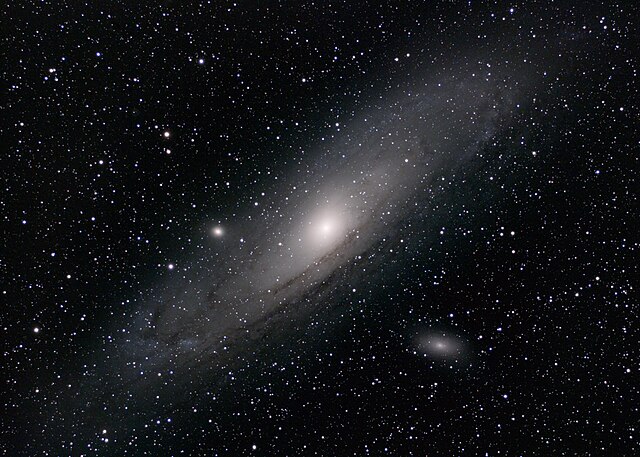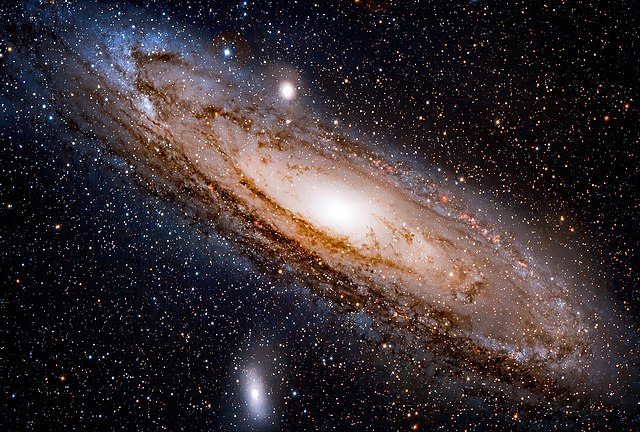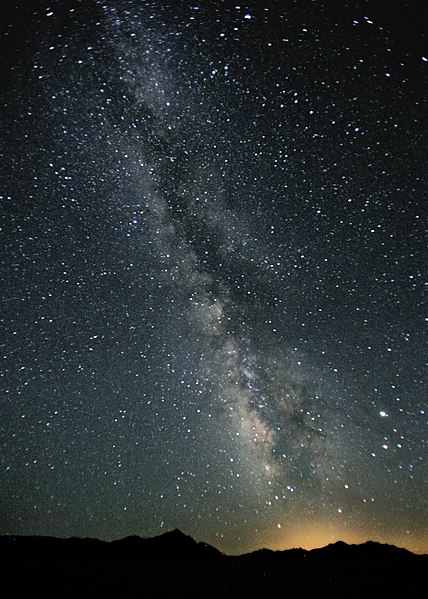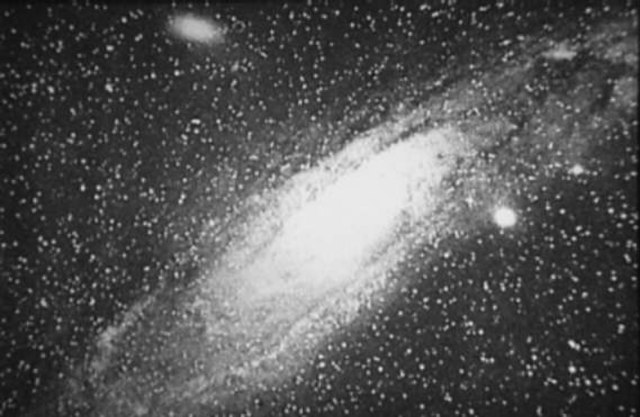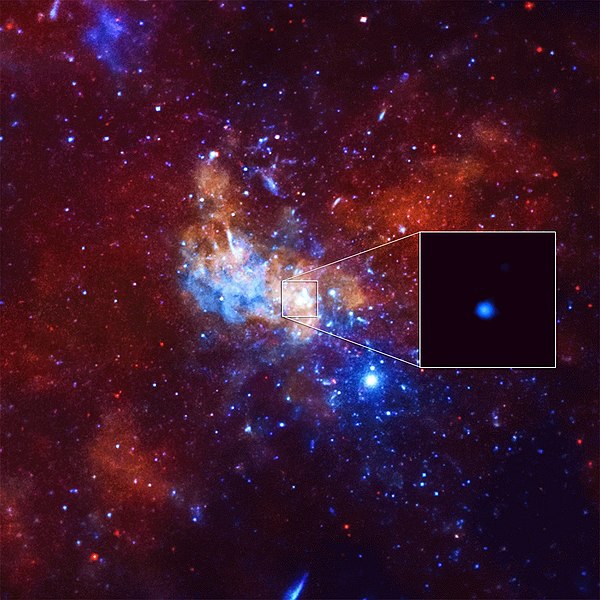The Andromeda Galaxy is a barred spiral galaxy and is the nearest major galaxy to the Milky Way. It was originally named the Andromeda Nebula and is cataloged as Messier 31, M31, and NGC 224. Andromeda has a D25 isophotal diameter of about 46.56 kiloparsecs (152,000 light-years) and is approximately 765 kpc (2.5 million light-years) from Earth. The galaxy's name stems from the area of Earth's sky in which it appears, the constellation of Andromeda, which itself is named after the princess who was the wife of Perseus in Greek mythology.
A visible light image of the Andromeda Galaxy. Messier 32 is to the left of the galactic nucleus and Messier 110 is at the bottom right.
The earliest known photograph of the Great Andromeda "Nebula" (with M110 to the upper right), by Isaac Roberts (29 December 1888)
Processed image of the Andromeda Galaxy, with enhancement of H-alpha to highlight its star-forming regions
Illustration showing both the size of each galaxy and the distance between the two galaxies, to scale
The Milky Way is the galaxy that includes the Solar System, with the name describing the galaxy's appearance from Earth: a hazy band of light seen in the night sky formed from stars that cannot be individually distinguished by the naked eye.
The Galactic Center as seen from Earth's night sky (featuring the telescope's laser guide star). Listed below is Galactic Center's information.
The Milky Way as seen from a dark site with little light pollution
Photograph of the "Great Andromeda Nebula" from 1899, later identified as the Andromeda Galaxy
Bright X-ray flares from Sagittarius A* (inset) in the center of the Milky Way, as detected by the Chandra X-ray Observatory.

